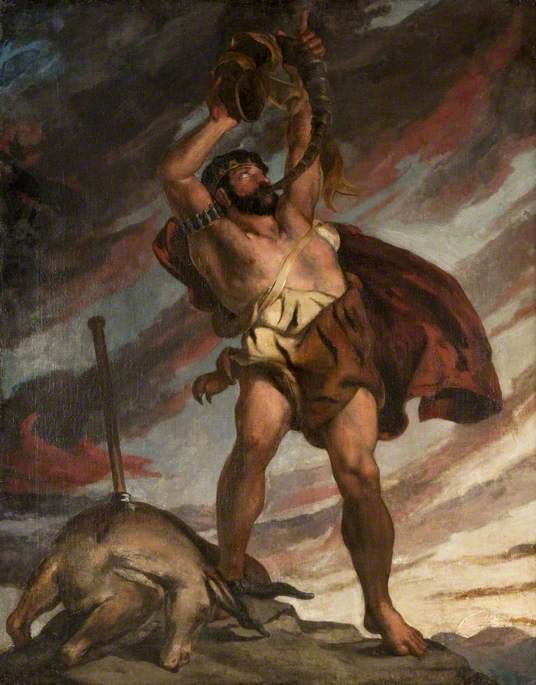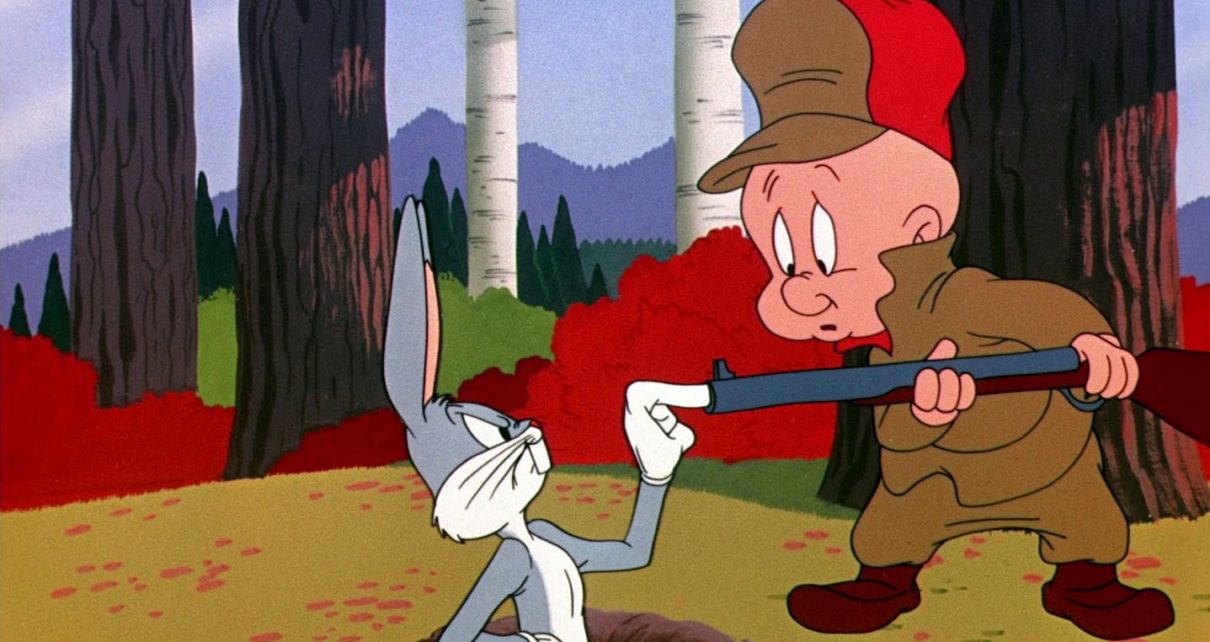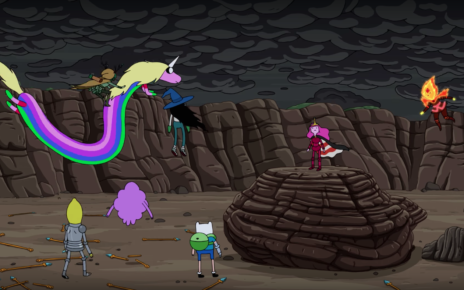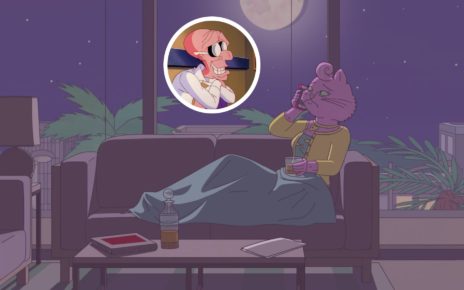This week, we’ll honor evewyone’s favowite wascawwy wabbit, Bugs Bunny, in three pieces as short as his own film shorts. This here’s the foist.
Bugs Bunny is easily the best-known rabbit in the world. Now a cultural icon, he’s starred in more than 160 cartoon shorts and, over time, became the most popular Warner Bros. character.
With the ubiquity of the bunny, he was bound to influence other parts of American culture. And he did: He changed the meaning of a Biblical reference, all while insulting his age-old nemesis.
Bugs has had beef with Elmer Fudd for decades, going all the way back to when the two characters premiered together in the Academy Award–nominated short “A Wild Hare” in 1940. Since then, Bugs has been a thorn in Elmer’s side.
Bugs constantly outwits and insults Elmer, and one of his favorites put-downs is calling the hapless hunter a “nimrod.” Which, as we all know, means idiot.
Except until Bugs Bunny came along, it didn’t.

In the long span of human history before Bugs, Nimrod—a biblical figure—was a hunter. He was king of Shinar, son of Cush, and great-grandson of Noah. According to the Bible (Genesis 10:8–9, for the curious): “And Cush begat Nimrod, who began to be mighty in the earth. He was a mighty hunter before the Lord.”
Nimrod was about as far as you could get from Elmer Fudd— which is why Bugs always sarcastically called Elmer exactly that. And while kids watching the cartoons may not have understood the Biblical reference, they did understand Bugs’s tone.
Because of Bugs’s popularity, the bunny’s use of nimrod became, over time, the predominant version of the word—so much so that, today, few people even know it is actually a Biblical reference.
Bugs Bunny’s reshaping of the meaning “nimrod” is a prime example of how life imitates art. Even if a word’s usage has no basis in fact, if enough people use it incorrectly long enough, it will become correct. In doing similarly, even nimrods like us can continue to honor Bugs Bunny’s legacy.
If you liked this story, sign up for our newsletter.
Thanks for reading The Dot and Line, where we talk about animation of all kinds. Don’t forget to ❤ this article and follow us on Twitter and Facebook.





